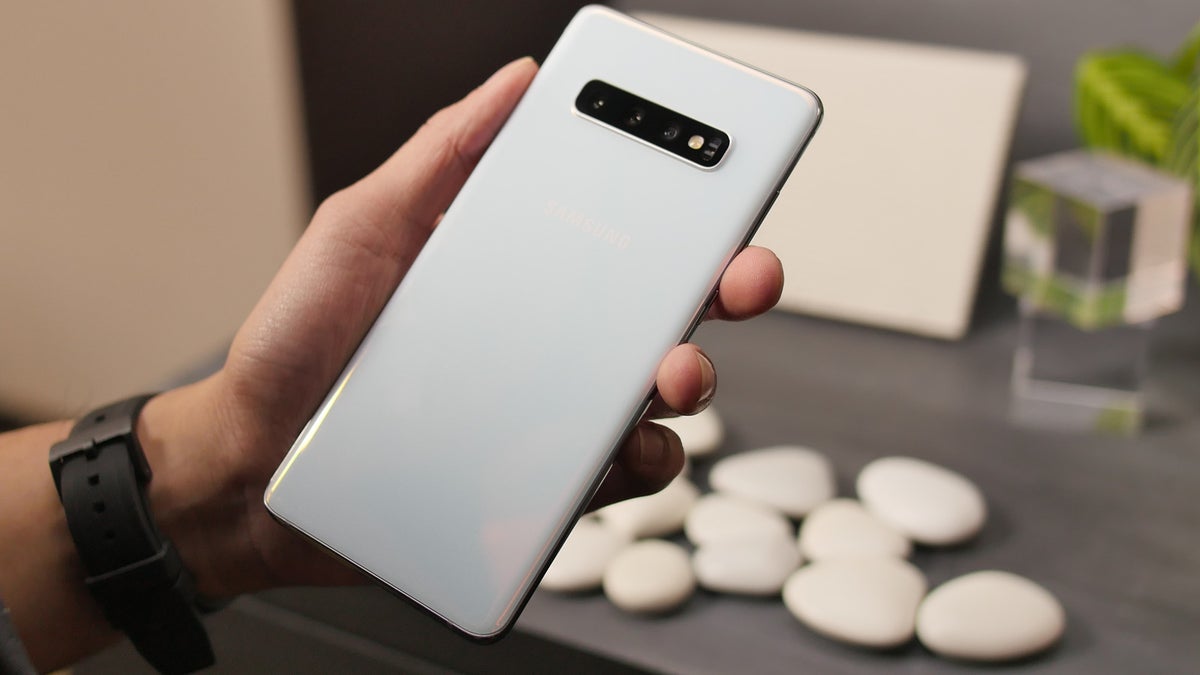Here's how the triple camera on the Galaxy S10+ compares vs iPhone, Note 9, and LG V40

Yesterday was Samsung's big day. At the highly anticipated Unpacked event, the company unveiled its latest flagship smartphones – the Galaxy S10 series – while journalists and nerds like us got to try them for the first time. In fact, we had the privilege to walk away with one.
Yup, we have a Samsung Galaxy S10+, and we've been playing with it for the past 24 hours. We've been testing the performance of its processor, the smoothness of its One UI, and the quality of its edge-to-edge display, among other things. We also took it outside for a camera shootout against some of its biggest rivals, and these are our initial impressions.
The triple camera on the Galaxy S10+ can be super useful
The Samsung Galaxy S10+ comes with three cameras at the back. One has a standard field of view – and is also the camera you're most likely to use throughout the day. The second cam has a 2x zoom telephoto lens, meaning that you can bring your subject closer without noticeable loss in quality – just like on the Galaxy Note 9 and Galaxy S9+, for instance. And the third cam is a new one for the S line – a super wide-angle shooter with a GoPro-like angle of view.
Needless to say, having three different camera perspectives can be of great use to both novice and experienced photographers. While the secondary telephoto and super wide-angle cameras have certain limitations, including poorer low-light performance compared to the main cam, they can be super useful in tricky situations. This puts the Galaxy S10+ ahead of the Note 9 and the iPhone XS Max, both of which have only a standard and a telephoto camera. The V40 is more or less on par with the S10+ in terms of versatility as LG's top-tier model has a nearly identical triple camera setup.
Here's how these four phones and their cameras perform:
Live Focus portrait images don't look any better
In fact, they may have gotten slightly worse. Portrait mode was popularized by the iPhone 7 Plus, which had a second 2x zoom telephoto camera designed with portraits in mind while software algorithms added blur to the area behind the subject. Samsung's answer to this feature came with the Galaxy Note 8. Live Focus, as Samsung called its implementation, also used a dedicated telephoto cam for taking portraits. And they looked great! This is how Live Focus works on the Galaxy S9+ and Note 9 as well.
On the Galaxy S10+, however, Live Focus uses the main camera instead of the telephoto one. Why is this a bad thing? Well, the optical properties of such cameras make them more suitable for taking portraits: they have less distortion and a more narrow field of view, drawing the attention of the viewer toward the person being photographed. It's not a difference an untrained eye would notice, but it is definitely there making an impact.
Here's how Live Focus shots from the Galaxy S10+ compare against portraits from the iPhone XS Max and the Galaxy Note 9, both of which have 2x zoom telephoto cams. We've also thrown in photos taken with the LG V40, which also has a portrait mode but doesn't use its telephoto cam either.
Colors are bright and vivid. Perhaps too vivid
The Samsung Galaxy S10+ wouldn't be a 2019 flagship without some AI sprinkled on top. Some of that AI goodness is found in its camera app – in the form of an image optimizer feature whose purpose is to detect scenes and tweak camera settings accordingly. All sounds great in theory, but in practice, it appears that Samsung's scene optimizer tends to boost saturation too much in certain situations – when flowers are detected in the scene, for instance. Its rivals are more likely to stick with a more neutral, more natural color representation. But hey, this could be a look you actually like, and if you don't, the scene optimizer can be disabled. Here are some more camera samples from the Galaxy S10+ and its rivals:
Overall image quality is still great, but not dramatically better
After testing the Galaxy S10+'s camera for a day, we'd say that its photos do look great, but if you're already a Note 9 or an iPhone XS Max owner, don't expect to be blown away by the results. Overall, images out of these phones are of very similar quality when looking at aspects like exposure or fine detail. Dynamics range appears to have been improved over the Galaxy Note 9, although what we're seeing could be simply a difference in the image processing software.
The goal of this quick comparison was to give us a good first look at how the cameras on the Galaxy S10+ compare against those on its rivals and predecessors. While we do need to do further camera testing to give the Galaxy S10+ our final verdict, it does appear to be a very capable shooter. But again, the images we've taken so far suggest that the Galaxy S10+ does not deliver dramatically better image quality over its rivals or predecessors. Its greatest strength so far is its versatility – the broader degree of creative freedom that you get by having three capable cameras at your disposal. We'll be testing the S10+ further in the days to come, so be sure to stick around for more coverage.
Follow us on Google News










Things that are NOT allowed:
To help keep our community safe and free from spam, we apply temporary limits to newly created accounts: